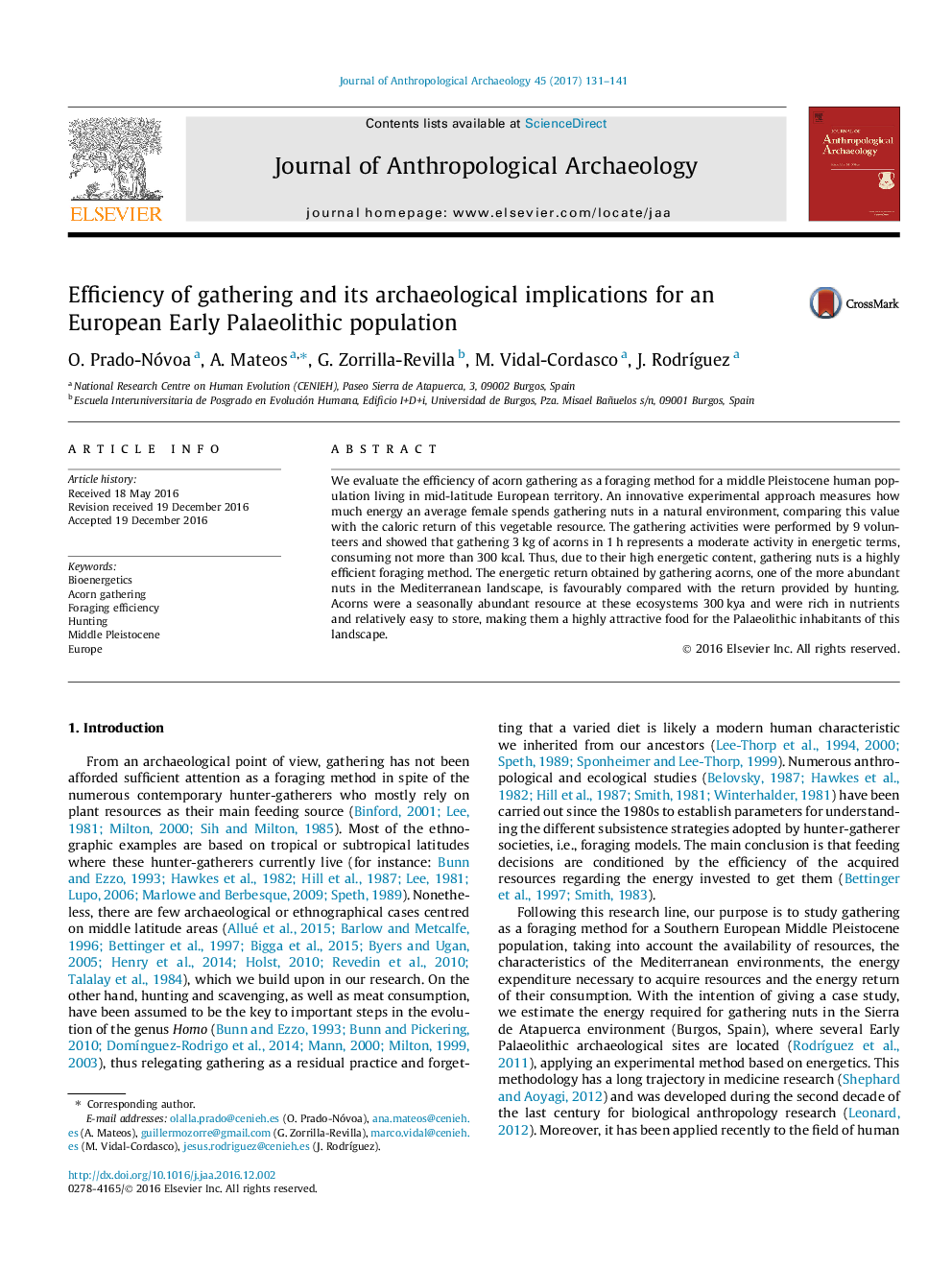| Article ID | Journal | Published Year | Pages | File Type |
|---|---|---|---|---|
| 5111926 | Journal of Anthropological Archaeology | 2017 | 11 Pages |
Abstract
We evaluate the efficiency of acorn gathering as a foraging method for a middle Pleistocene human population living in mid-latitude European territory. An innovative experimental approach measures how much energy an average female spends gathering nuts in a natural environment, comparing this value with the caloric return of this vegetable resource. The gathering activities were performed by 9 volunteers and showed that gathering 3Â kg of acorns in 1Â h represents a moderate activity in energetic terms, consuming not more than 300Â kcal. Thus, due to their high energetic content, gathering nuts is a highly efficient foraging method. The energetic return obtained by gathering acorns, one of the more abundant nuts in the Mediterranean landscape, is favourably compared with the return provided by hunting. Acorns were a seasonally abundant resource at these ecosystems 300Â kya and were rich in nutrients and relatively easy to store, making them a highly attractive food for the Palaeolithic inhabitants of this landscape.
Related Topics
Social Sciences and Humanities
Arts and Humanities
History
Authors
O. Prado-Nóvoa, A. Mateos, G. Zorrilla-Revilla, M. Vidal-Cordasco, J. RodrÃguez,
